-
Membership
Membership
Anyone with an interest in the history of the built environment is welcome to join the Society of Architectural Historians -
Conferences
Conferences
SAH Annual International Conferences bring members together for scholarly exchange and networking -
Publications
Publications
Through print and digital publications, SAH documents the history of the built environment and disseminates scholarshipLatest Issue:

-
Programs
Programs
SAH promotes meaningful engagement with the history of the built environment through its programsMember Programs
-
Jobs & Opportunities
Jobs & Opportunities
SAH provides resources, fellowships, and grants to help further your career and professional life -
Support
Support
We invite you to support the educational mission of SAH by making a gift, becoming a member, or volunteering -
About
About
SAH promotes the study, interpretation, and conservation of the built environment worldwide for the benefit of all
An American in Saigon
May 6, 2015
by
Amber N. Wiley, 2013 Brooks Travelling Fellow
April 30, 2015 marked the 40th anniversary of the Fall of Saigon. This event was highlighted in posters all throughout Vietnam, from Ho Chi Minh City in the south, to Hue in central Vietnam, and Hanoi in the north. The posters displayed images of proud men, women, and children—farmers, graduates, businessmen, and servicemen.1 I was in the capital city of Hanoi on April 30, and expected to witness festivities that celebrated Reunification Day, as the event is officially known in Vietnam.2 This would not be the case, since the activities were directed south toward Ho Chi Minh City—Saigon, the former capital of the Republic of Vietnam. In fact, halfway through the day I forgot it was a holiday at all. I was reminded when the fireworks display above Hoan Kiem Lake commenced promptly at 9:00 pm.
When I got up that morning I switched back and forth between channels showing the parade in Ho Chi Minh City celebrating reunification and CNN’s coverage of the unrest in Baltimore. As an American who has loved the time I have spent in Vietnam and also my visits to Baltimore, the irony cut like a knife. Physical and emotional scars from the Fall of Saigon still exist in Vietnam and its diaspora. They were hidden under the veil of unity, while the freshly reopened wounds of disunity in Baltimore were being laid bare for the world to see.
On April 30, 1975, the People’s Army of Vietnam and the National Liberation Front captured Saigon as the remaining U.S. Marines evacuated, along with thousands of South Vietnamese in Operation Frequent Wind. There are many lasting images of the final days of the Vietnam War (or the American War as it is called in Vietnam). Hopeful evacuees rushing the U.S. Embassy grounds, overloaded helicopters lifting up precariously from rooftops. The image of the North Vietnamese tank crashing through the front gates of the Independence Palace is iconic for the Reunification holiday.
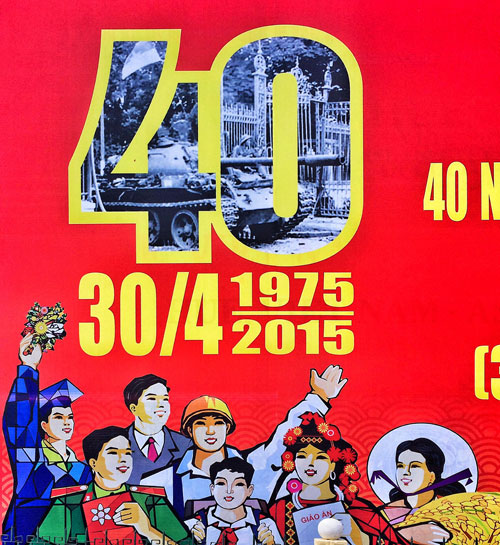
Figure 1. Reunification Day poster in Hue, Vietnam. Image of tank at the Independence Palace is superimposed on the number 40.
HCMC
Modern Ho Chi Minh City is fast-paced, bustling, and cosmopolitan. It is similar to Addis Ababa in that none of the places I visited in the city were listed as World Heritage sites. This does not mean that the city’s heritage is based solely on the image of a modern metropolis, as it is in Addis Ababa. In fact, the two major centers I visited in Ho Chi Minh City are referred to as historic Cholon (Ho Chi Minh City’s Chinatown) and Saigon. Both of these neighborhoods were previously independent cities that date back to the late 17th and 18th centuries, respectively.3 Chinese merchants settled Cholon, while Saigon was the Viet area. A Khmer minority was also present in the region.
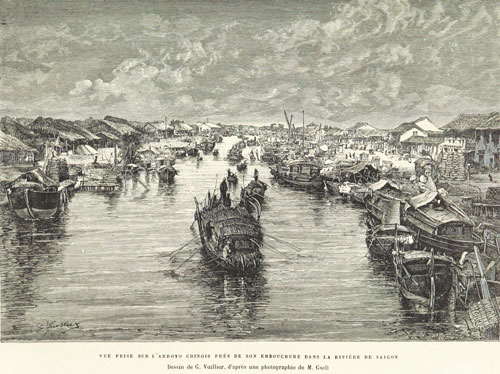
Figure 2. Cholon and its waterways. Source: Elisee Reclus, Nouvelle Geographie Universelle. La terre et les hommes (Paris, 1876): 923. The British Library, The Flickr Commons.
Cholon and Saigon were industrious ports located along the canals of the Saigon River. “HCMC is among SE Asian cities whose first civilizations were founded at water intersection areas,” notes geographer Vu Thi Hong Hanh. Hanh continues “The navigable rivers and canals have served in the past as an important route into the city, often being the main approach to city.”4 The Museum of Ho Chi Minh City (formerly Gia Long Palace) covers this early history and geography, emphasizing the various commercial trades of neighborhoods within Cholon and Saigon.5
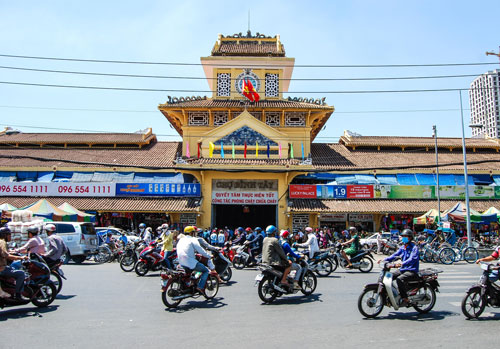
Figure 3. Binh Tay Market in Cholon. “Cho Lon” literally means “big market” in Vietnamese. The original Chinese (in both Mandarin and Cantonese) name for the area meant “embankment.”

Figure 4. Exhibit on commercial and artistic trades. Museum of Ho Chi Minh City.
The Museum of Ho Chi Minh City is one of the lesser-visited sites in the city, but I would argue it is imperative to understanding the complex history of the former capital of South Vietnam. The official mission of the museum has evolved over the years from focusing on the revolutionary past to the city’s past. The revolutionary past still takes a prominent position in the exhibition space; however, efforts have been made to focus on other cultural aspects such as arts, family life, and technology.
Another important aspect of the museum is the history of the building itself. This is not covered in a thorough manner in the museum, but it certainly should be. The building is an artifact that could aid in one’s understanding of the various political forces that shaped the history of the city. Built by French architect Marie-Alfred Foulhoux during the time of French colonization, the building passed hands from the French to Japanese imperialists back to the French, to the State of Vietnam to the Republic of Vietnam to the Socialist Republic of Vietnam. It was a residence, administrative office, courthouse, and museum. Today it also serves as occasional backdrop for wedding photographs. All of this in less than 100 years.
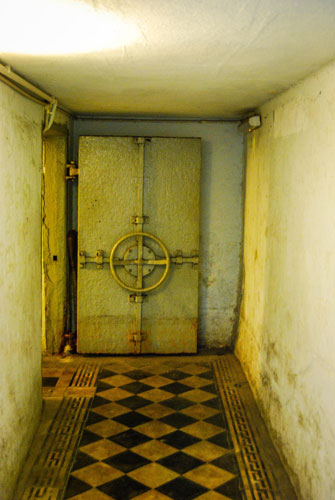
Figure 5. Passageway to bunker that was constructed in 1962 during Diem presidency.
This schizophrenic past is only lightly interpreted in the building, and focuses on the additions completed during the time of Ngo Dinh Diem, president of the Republic of Vietnam. Diem had a bunker and underground tunnel system constructed under the building when he used it as a residence in 1962. His previous residence, the Norodom Palace, had been bombed and partially destroyed.
On Reunification
My favorite singular building in Ho Chi Minh City was the Reunification Palace, formerly known as Independence Palace. Similar to the site of the Museum of Ho Chi Minh City, this building, its garden complex, and its geographical setting within the larger area of historic Saigon are all imbued with the complicated narrative of the history of the city. This 1966 building was constructed on the site of the Norodom Palace, an extravagant building completed in 1875 meant to serve as the residence of the Admiral-Governor of Cochinchina. With the reconfiguration of the French colonies in Southeast Asia the Norodom Palace played a lesser role than originally intended, and sat vacant for several decades, used only occasionally for ceremonial events. It wasn’t until 1955 that the building was renamed Independence Palace, and was later used by Diem as his presidential palace.
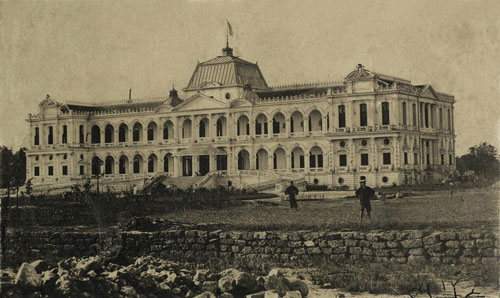
Figure 6. Palais du Gouverneur General a Saigon (Norodom Palace, later Independence Palace) 1875. Photograph by Emile Gsell. Architect: Georges L'Hermitte. Constructed between 1868-1875. Source: Flickr.
Members of the Vietnam Air Force bombed Norodom Palace in an unsuccessful assassination attempt on Diem in 1962. Diem survived and moved his residence to the Gia Long Palace, where he constructed the shelter and underground tunnels. The damage to Norodom Palace was significant, and Diem ordered demolition of the building and replacement with a modern palatial structure. Diem was eventually assassinated before the new building was completed.
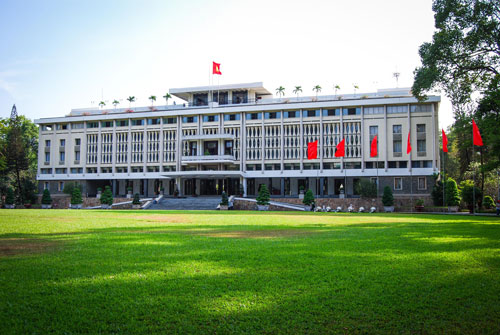
Figure 7. Reunification palace today. Architect: Ngo Viet Thu, 1966.
French-trained Vietnamese architect Ngo Viet Thu designed the new Independence Palace, which still stands today. Thu studied architecture at École Supérieure d'architecture in Đà Lạt, and later the École des Beaux-Arts in Paris, where he won the Grand Prix de Rome in 1955. There is a dearth of literature on Thu and his work, although it appears he had a successful career and international recognition—he was the first Asian architect designated an honorary fellow of the American Institute of Architects.
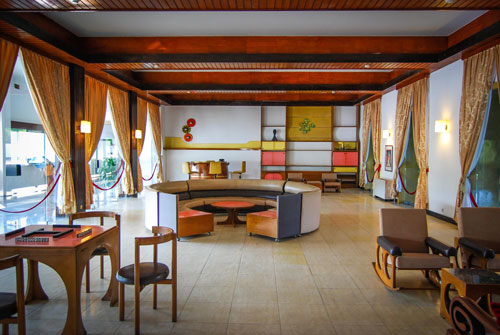
Figure 8. Game room in Reunification Palace.
Architectural critic Mitchell Owens describes the interior design of the building and its symbolic layout in flowery prose befitting of the amount of opulence and careful contemplation put into the edifice:
The palace that Thu built is deliriously glamorous, a lip-smacking mix of Turandot melodrama and James Bond cool. Walls sprout gilded sconces the size of industrial-strength woks. Ceilings drip with blocky chandeliers. A reception room is sheathed in gold lacquer and scattered with Parsons tables, while the den is a 1960's rec room writ large, right down to the barrel-shaped wet bar and king-size sectional sofa.6
Photographer Richard Ross chooses to highlight the other, more sinister side of the building’s design in his visually stunning book Architecture of Authority. He includes bleak images of a communications bunker and underground passageway, necessary components of the design in the fragile status of the Republic of Vietnam.
Thu’s design for the structure is explained in the display boards throughout the structure. This building is exceptionally well maintained (Owens describes it as preserved in “curatorial amber”—obviously this made me chuckle) and interpreted in a straightforward and explanatory manner, in contrast to its close neighbors the Museum of Ho Chi Minh City and the War Remnants Museum. Most of the interpretation is given over to the history of the building itself, the use of its various rooms, and its design. Explanatory boards offer interpretations in Vietnamese, English, and French.
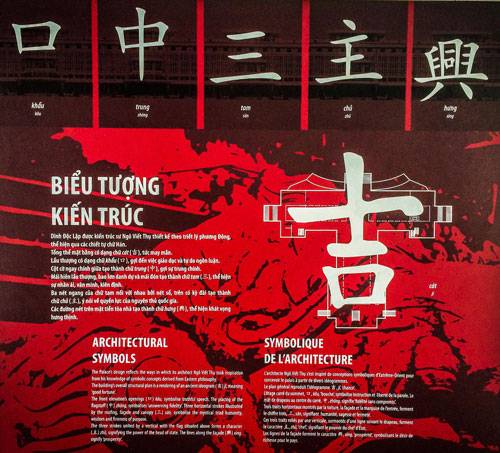
Figure 9. Display board in Reunification Palace.
The Reunification Palace is a central landmark to the festivities on Reunification Day. The giant government-organized parade that happens in Ho Chi Minh City starts at the Saigon Zoo, runs down Le Duan Street, and symbolically passes through Reunification Palace. Legions of military men march through the streets of Ho Chi Minh City, followed by civilians in colorful outfits celebrating Vietnam’s heritage. The heavy military representation, however, along with the symbolic encounter with Reunification Palace is an annual re-enactment of conquest, a reminder that old Saigon is no more.
On Remnants
It was on my visit to the Taj Mahal that I had one of many deep conversations with my friend Roshida about cultural heritage and destruction. Roshida also studied at the University of Virginia, although she was pursuing a law degree while I was pursuing my master’s in architectural history. Our tour guide had just explained that the Taj Mahal was covered with bamboo scaffolding during World War II as a means to divert potential bombing by the Axis Powers.7
“But it’s the TAJ!” I exclaimed. “Who would bomb the TAJ??!! Someone would actually bomb the Taj??”
Roshida, slowly and patiently, as if explaining to a five-year-old, “Yes, Amber, someone would bomb the Taj.”
“I just can’t believe it, I mean, it’s the symbol of India!”
“Amber, we would bomb the Taj.”
This was a hypothetical, of course, and I understood the point she was making. U.S.-India relationships have warmed since the Cold War, and President Obama and Prime Minister Modi have committed to supporting each other on several key foreign policy issues. It is highly unlikely that United States would have to take an aggressive military stance towards India, but the comment made me reflect on what I hold as infallible truths. I do not think I operate under a cloak of naiveté when it comes to pondering the extent of man’s capacity to destroy objects of intrinsic, universal value. While I was in India, for instance, news of Islamic State militants destroying historic sites and artifacts in Iraq went viral. Cultural preservationists and lay people alike know of the Taliban’s destruction of the Buddhas in Bamiyan in 2001. I am well aware of the U.S. nuclear attacks on Hiroshima and Nagasaki in 1945, and also the looting of the National Museum of Iraq after the U.S. invasion of the country. The U.S. military presence added a degree of destabilization that left cultural artifacts vulnerable. The list of World Heritage sites destroyed in the Syrian civil war continues to grow. We have ancient examples, millennia worth, of structures destroyed in the name of war and conquest. It still is unfathomable for me to believe that in this day and age, destruction of irreplaceable heritage is considered a viable strategy for various parties in conflict. My time in Vietnam, however, has been eye opening, pushing me to confront the realities of war.
Ho Chi Minh City, while retaining the historic infrastructure of canals and prominent streets, does not retain much of its historic urban fabric. This was annihilated during the Tet Offensive of 1968—Cholon suffered heavy damage, the whole neighborhood was practically razed. The Vietnam War was not fought on traditional rules of “warfare” (I have a very hard time understanding how war even has rules, it is all destruction to me, but that is a different blog post for a different day), and forces on both sides of the conflict wreaked extreme havoc on cities and civilians. It took a lot of effort on my part to reimagine historic Cholon while I was visiting. There is very little in the way of interpretation in the neighborhood itself.
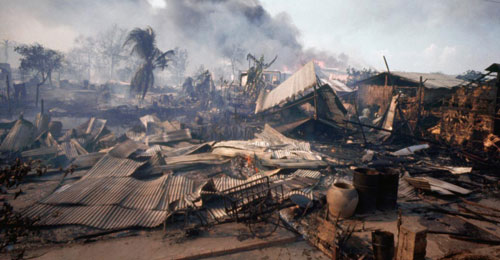
Figure 10. Cholon after Tet Offensive. Source: www.history.com.
Two World Heritage sites that were particularly poignant in juxtaposing the remnants of war with the present were the My Son Sanctuary outside Hoi An, and the Citadel in Hue, another site of a major battle during the Tet Offensive. At My Son there are signs marking craters that were telltale emblems of the carpet-bombing by American forces in 1969. In Hue there was a concerted effort to present to the public the vast amount of damage that the Citadel complex suffered during the Tet Offensive, and the tremendous amount of work done to reconstruct the buildings in the complex. A number of natural World Heritage sites in Vietnam were also physically altered by the war, these include Phong Nha-Ke Bang National Park, and Ha Long Bay. From the obliteration of cultural sites, to neighborhoods, to whole towns, to forests and farms, to the lasting environmental and human effects of Agent Orange, the amount of destruction in the country by both North and South Vietnamese forces and their allies is almost immeasurable.
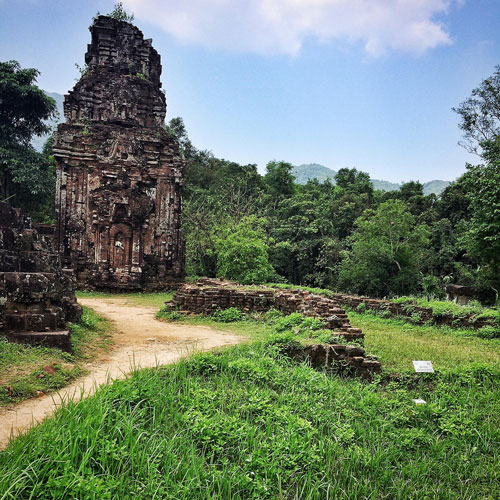
Figure 11. Ruins of My Son Sanctuary. The green space in the foreground is one-fourth of a bomb crater from a U.S. carpet-bombing campaign during the Vietnam War.
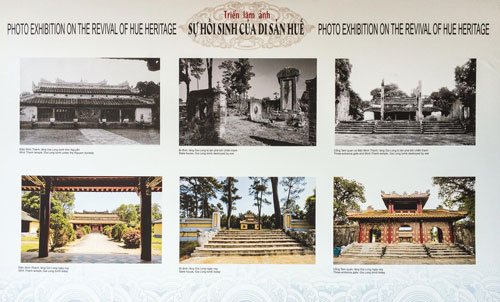
Figure 12. Exhibit in Citadel at Hue that documents the post-war restoration process throughout the city.
I felt a manner and degree of shame I was not accustomed to when visiting these complexes. This is where the “we” that my friend Roshida referred to in India comes in. As an American I am a part of that “we.” That “we,” of course, did not refer to Roshida or myself, per se. We, as Roshida implied, was the United States government and military, and as such, we, the civilians, are implicated in the destruction. Or are we? I have spent much time in Vietnam thinking about this question. Wondering if my shame was warranted—I wasn’t even alive during the war. Wondering if my shame was instructive—could these remnants of war be lessons I could teach my students, could they be things I take with me on my day-to-day activities as both scholar and preservationist?
There is much work to be done in Vietnam around issues of cultural preservation and heritage, particularly as it relates to the “American War.” One could write a book, or several books, on interpretation of historic sites related to the drastic socio-political changes that swept the country, sites like the Museum of Ho Chi Minh City (Gia Long Palace) and the Reunification Palace, about purpose-built sites such as the War Remnants Museum (which will be discussed shortly) and about the UNESCO World Heritage sites that are currently being reconstructed as a response to the growing tourism in Vietnam, such as the My Son Sanctuary and the Citadel of Hue.
The War Remnants Museum was formerly called “Exhibition House for U.S. and Puppet Crimes” as well as the “Exhibition House for Crimes of War and Aggression,” and “Museum of American Atrocities.” It is important to go into the museum with an understanding of that information, since the narrative of the museum still follows those lines. Cultural geographer Jamie Gillen, who is my contemporary in age, notes:
I was born after the war ended and in the eyes of the Party I have only a patchwork and biased understanding of the Vietnam War and no understanding of the American War. The narrative driving the museum is of such targeted force and with such contemporary relevance that it is arguably one of the goals of the museum to create a sense of personal responsibility about the American War among tourists like myself who would not ordinarily give it much sustained thought.8
This is one of the many goals of the museum. It is successful in that endeavor. As cultural critic Mark Edmunson notes, “The museum has an effect on people. American students break down in tears; they talk about being ashamed to be Americans."9 I went as an observer, as a public historian, as a professor of American studies. Certainly I went as an American too, but one with a personally informed view of the events as a black American, and as someone who is close to an uncle who served with the 82nd Airborne in Vietnam.
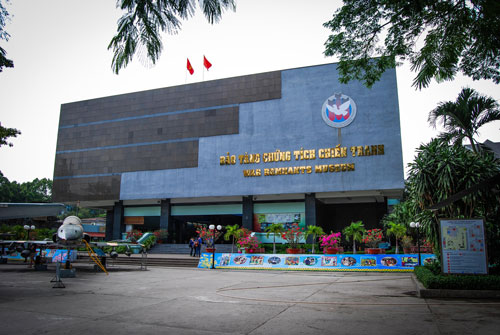
Figure 13. War Remnants Museum.
There were a few actual war remnants in the front lawn of the museum complex, mainly airplanes, helicopters, and tanks. There was a replica prison and torture cell off to the left. Upon entering one goes to the top floor to follow the exhibit sequence down to the ground floor. The first exhibit room is entitled “Historical Truths” as a means to either: set the record straight, or push forward propaganda, depending on your own interpretation of the events that led to the American War.
The photography exhibit entitled “Requiem” is striking—it is aesthetically poignant, moving and compelling, at the same time that it leaves one stunned. Stunned from the horror of it all. The museum is light in the way of artifacts, and perhaps this is because the pictures speak for themselves. They are absolutely shocking. There is little contextual interpretation though there are lots of captions. Some are speculative. I found the photography exhibit interesting as a photographer myself. It was captivating to see which countries the photojournalists came from—Vietnam, the U.S., France, Japan, Australia, Austria, England, Germany, Switzerland, Cambodia, and Singapore. These are men who put their lives on the line to document one of the most gruesome chapters in world history.
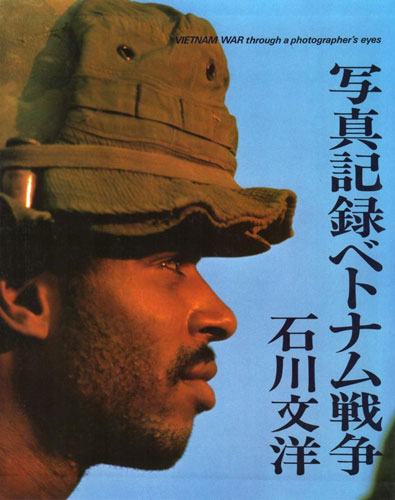
Figure 14. Cover of Bunyo Ishikawa's book Vietnam War Through a Photographer's Eyes. Source: http://mikitimi-books-prints.highwire.com/
The number of black faces I saw in the museum struck me. And I don’t mean other visitors; I mean black faces on the walls, in the pictures, on the American side. One doesn’t often see black faces in museums unless they are African or African-American themed museums. Here it was clear there was an overrepresentation of black faces. One of the photographers, Bunyo Ishikawa from Japan, even had a black soldier as the cover image of his book, Vietnam War Through a Photographer’s Eyes. I saw my 82nd Airborne veteran uncle’s face on every black soldier in the exhibit. It hurt me to the core to think that these were some of the memories he had hidden deep within his psyche. Things he still won’t talk about to this day.
When I got back to my hostel that evening, I did a bit of research on the percentage of black soldiers serving in Vietnam. Blacks were overrepresented on the front lines, and a higher percentage of blacks were serving in the war than the percentage of blacks in the States at that time. Part of this is due to the draft, and part of this is due to the dire situation in inner-city communities in the United States—men enlisting to complete a tour of duty and hopefully come home with military benefits granted to veterans. I came across a book while in the museum entitled Memphis Nam Sweden: The Story of a Black Deserter. It made me think of the perilous situation that black active military and veterans faced in the twentieth century, putting their lives on the line in war and facing discrimination at home.
These observations relate back to the current situation of urban unrest in Baltimore in very real ways. While doing research on architecture in Vietnam I came across an article in the Journal of Architectural Education by urban planner and peace activist Robert J. Heifetz. It was eerily relevant to me as an American visiting Vietnam during the anniversary of the Fall of Saigon, and as a black American watching Baltimore burn while I am abroad. The article, entitled “The Urban Crisis,” was published in October 1969. It was adapted from an address Heifetz gave at the ACSA conference earlier that year. In it, Heifetz calls for a radical new approach to architectural education that is critical of Band-Aid fixes to urban issues and that continually reinforces the architecture profession’s social responsibilities. Additionally, he argues that the organizational structures that govern the profession should be committed to supporting activities meant to “end poverty and discrimination and to improve the quality of the physical, social and economic environment.”10 Heifetz argues that organizations such as the ACSA should protest “the misallocation of over 80 billion dollars to support an enormously inflated military machine … thereby draining the energies and resources away from the essential social, economic and physical reconstruction so essential both at home and abroad.”11 Here, of course, he is talking about American military investment in the Vietnam War. Heifetz quotes Lewis Mumford, who gave an address entitled “Vietnam Before and After” to the Ethical Culture Society in New York City on May 3, 1968, for the Committee of the Planning Professions to End the War in Vietnam:
What right has the American government to preach law and order, respect for life and property, in American cities, when it has carried lawlessness and disorder, dehumanization and moral degradation to their ultimate limits in Vietnam? The group of architects, planners, engineers and technicians that have come here tonight are right in believing that the state of our cities today is directly connected with the shame of our presence and our actions in Vietnam. They are right, likewise, in believing that the tens of billions of dollars that have been squandered on putting a huge military establishment into Vietnam, and on poisoning crops, burning villages, defoliating vegetation, spraying napalm on innocent civilians, or saturating North Vietnam with TNT bombs by the multimegaton, should have been invested in permanent works of construction and education in the United States. Our moral bankruptcy, our political bankruptcy and our economic bankruptcy have gone hand in hand, one re-enforcing the other.12
The historical context of Mumford’s statement is crucial. His address was given almost a month to the day after the assassination of Dr. Martin Luther King, Jr. The anguish of that event was felt around the world, and particularly in the United States as predominately African-American communities in Washington, D.C., Wilmington, Delaware, Chicago, Detroit, Kansas City, Louisville, and yes, Baltimore, were scenes of civil unrest and riots. It does not take a major leap to see how these issues are connected and still relevant in April 2015—in Baltimore and Ho Chi Minh City, former Saigon.
I have a few more weeks here in Vietnam, and my time will certainly not always be spent looking into the horrific legacy of the war. For a part of me, thinking about these things is natural—I am a historian, I focus on public interpretations of the past, and quite frankly I’m traveling to do just that—to undertake a study of various preservation practices on the international level. The sites I have examined throughout this trip have complicated histories, and are located in countries that face a variety of challenges including reconciling a colonial past with a post-colonial present, struggles with political corruption and/or instability, and, in some cases, burgeoning populations and a high premium for real estate in historically significant areas.
In a sense, it is my job to think through the ugly, mangled portions of our collective past, but I like Vietnam too much to continuously go back to the war. Plus, this country has millennia worth of history to examine, and I intend to check out ancient architectural sites that had nothing to do with the ugliness of the Vietnam War. It does not mean I will avoid the topic—it would be intellectually lazy and dishonest of me to do so. I will maintain reverence for the fallen at the sites I visit. I will also enjoy what Vietnam is today—a beautiful, tropical, and lively destination with a friendly, welcoming population and a lot of gorgeous things to offer in the way of culture and history.
H. Allen Brooks Travelling Fellowship Google Map
Recommended Readings
Jonathan Burton, “Mobile Guide: Saigon, Then and Now,” Wall Street Journal September 3, 1991: A16
Jeanne Conte, “Southern Vietnam Today: Where Healing Goes On — Slowly,” World & I 20 no. 11 (November 2005): 5
Jennifer W. Dickey, “Review: Reunification Palace,” The Public Historian 33 no. 2 (Spring 2011): 152-162
Elena Givental, “Ho Chi Minh City: Contested Public and Private Space in the Vietnamese Metropolis,” Focus on Geography 56 no. 1 (2013): 32-44
Erik Harms, “Eviction Time in the New Saigon: Temporalities of Displacement in the Rubble of Development,” Cultural Anthropology 28 no. 2 (2013): 344-368
Gregg Huff and Luis Angeles, “Globalization, Industrialization and Urbanization in Pre-World War II Southeast Asia,” Explorations in Economic History 48 (2011): 20–36
Du Huynh, “The Misuse of Urban Planning in Ho Chi Minh City,” Habitat International 48 (2015): 11-19
Annette M. Kim, “The Mixed-Use Sidewalk,” Journal of the American Planning Association 78 no. 3 (2012): 225-238
Priscilla Koh, “You Can Come Home Again: Narratives of Home and Belonging among Second-Generation Viet Kieu in Vietnam,” Sojourn: Journal o f Social Issues in Southeast Asia 30 no. 1 (2015): 173-214
Chee-Kien Lai, “Beyond Colonial and National Frameworks Some Thoughts on the Writing of Southeast Asian Architecture,” Journal of Architectural Education 63 n. 2 (2010): 74-75
Ann Marie Leshkowich, “Wandering Ghosts of Late Socialism: Conflict, Metaphor, and Memory in a Southern Vietnamese Marketplace,” The Journal of Asian Studies 67 no. 1 (February 2008): 5-41
John Martone, “Historic Truths / Looking at Earth,” Public Culture 14 no. 3 (Fall 2002): 477-492
Simon Montlake, “Will Urban Growth Trample Vietnam's Charm?” Christian Science Monitor 99 no. 75 March 15, 2007: 7
Srilata Ravi, “Modernity, Imperialism and the Pleasures of Travel: The Continental Hotel in Saigon,” Asian Studies Review 32 no. 4 (2008): 475-490
Carl Robinson, “A Time-Out,” Metropolis Magazine (September 2013) http://www.metropolismag.com/September-2013/A-Time-Out/
Hue-Tam Ho Tai, “Representing the Past in Vietnamese Museums,” Curator 41 no. 3 (September 1998): 187-199
Gwendolyn Wright, The Politics of Design in French Colonial Urbanism (Chicago: University of Chicago Press, 1991)
- I will refer to the city as “Ho Chi Minh City” when discussing present context and “Saigon” in the historical context.
- Due to the very complex nature of the war, the day is also known in various Vietnamese communities as Black April, Day We Lost the Country, Liberation Day, National Day of Shame, National Day of Resentment, and Victory Day.
- Before the city was known as Saigon, it was Prey Nokor, part of the ancient Khmer Empire.
- Vu Thi Hong Hanh, “Canal-side Highway in Ho Chi Minh City (HCMC), Vietnam – Issues of Urban Cultural Conservation and Tourism Development,” GeoJournal Special Issue: Heritage, Politics and Identity in Southeast Asia 66 no. 3 (2006): 172.
- The structure was originally meant to serve as a commercial trade exhibition space, but never fulfilled that purpose. Instead it was retrofitted for the residence of the Lieutenant-Governor of Cochinchina.
- Mitchell Owens, “Madame Nhu Almost Slept Here,” New York Times January 12, 2003 http://www.nytimes.com/2003/01/12/magazine/style-madame-nhu-almost-slept-here.html.
- The Taj Mahal was covered several other times, during the Indian-Pakistani Wars of 1965 and 1971, and shortly after the September 11, 2001 attacks.
- Jamie Gillen, “Tourism and Nation Building at the War Remnants Museum in Ho Chi Minh City, Vietnam,” Annals of the Association of American Geographers 104 no. 6 (2014): 1313.
- Mark Edmundson, “In the New Vietnam,” Raritan: A Quarterly Review 28 no. 2 (2008): 160.
- Robert J. Heifetz, “The Urban Crisis,” Journal of Architectural Education 23 no. 4 (October 1969): 33.
- Ibid.
- Ibid., 33-34.

